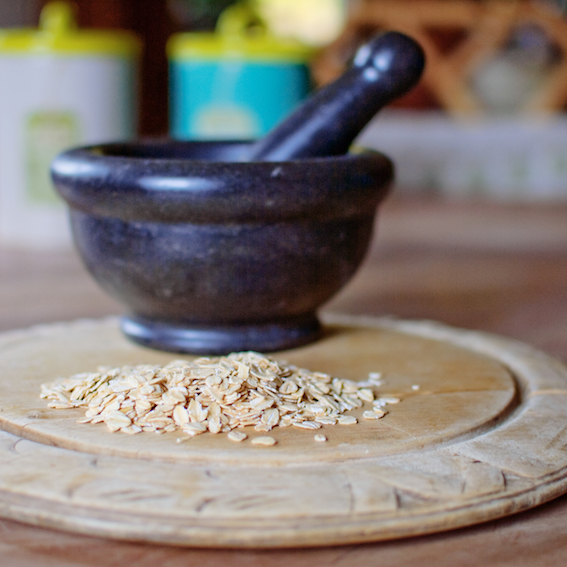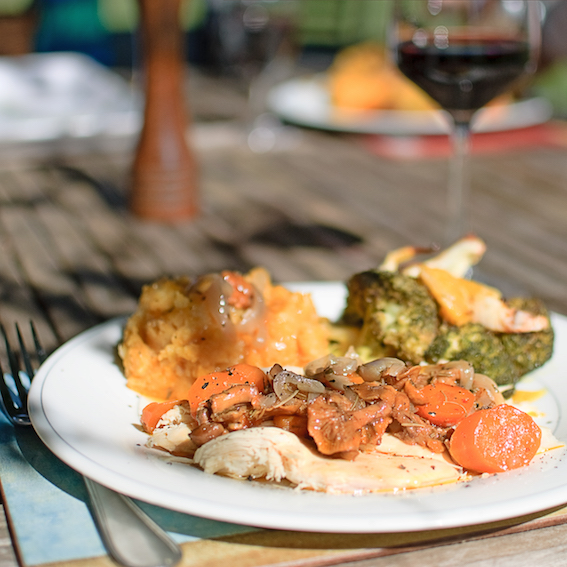-
Shitake mushrooms and furtive barbarians

It will soon be mushroom season, although for the moment it’s still too hot and dry here; Luc is on damp ground watch like a crazy Frenchman. Oh, hang on… I did find a lone, perfect cep yesterday though, which was grabbed from my hand and in a frying pan asphyxiating in olive oil and garlic before I was through the door. I never go foraging without my vicious, spiky walking poles, ostensibly to move away leaves without having to bend down, although really to maim greedy cep-stealing fingers. There’s something about looking for mushrooms (mushrooming?) that turns people into furtive barbarians. Bump into someone who is blatantly foraging and they become incredibly defensive: ‘Me? Mushrooms? Can’t stand the mouldy bastards! I’m just hanging out in the middle of the woods, catching a few rays and bonding with the slugs’.
Even armed with my lethal walking stick, I won’t be finding any shitake mushrooms around here; they grow wild in mountainous regions of Asia and absolutely nowhere else. Scientists have discovered a possible correlation between typhoon wind patterns and the scattering of shitake spores dispersed from one country to the other. The medicinal properties of shiitake mushrooms have been studied since the Ming Dynasty when Chinese elders considered the shitake to be the ‘elixir of the life’.
Shitakes are unique because they contain all eight essential amino acids. They are also a rich source of vitamin D, B vitamins and selenium and other minerals. They also contain linoleic acid which aids weight loss and builds muscle. It also has bone-building benefits, improves digestion, and reduces food allergies and sensitivities.
Shitake mushrooms contain beta-glucan, an immune booster and soluble dietary fibre that’s also found in barley, rye and oats. The lentinan they contain strengthens the immune system and helps to fight off disease and infection. Research suggests that shiitake mushrooms may help fight cancer cells and also help heal damage caused by anticancer treatments. The mushrooms have also been shown to induce apoptosis, the process of cell death. They also contain L-ergothioneine, a potent antioxidant with unique cell-protective properties.
Lastly, these wonderful mushrooms have been shown to have anti-vital, anti-bacterial and anti-fungal properties, effective against a wide range of mould, yeasts, and fungi. It would appear that they even have the ability to kill off the dangerous organisms without affecting the healthy organisms. -
Madiran wine and unravelling

The production of Madiran wine is spread over three departments of southwestern France: Gers, Hautes Pyrénées and Pyrénées Atlantiques. We visited two chateaux in the region last week. At the first chateau, when I couldn’t face another gory detail of the ‘chatelain’s’ latest surgical procedure, I ended up with my head between my legs to stop myself fainting. I suspect his technique is to regale wine buyers with the minutiae of his latest operation, and when their defences are down (or they’ll do anything to escape), go in for the kill; we had planned to buy 18 bottles of his excellent 2012 and instead ended up with 36!
Our visit to the second chateau was after a very long, hot hike through the vineyards, and I think that we probably arrived looking a bit dishevelled (our sartorial baseline is iffy to begin with). There was an English couple tasting wine, and either they’d been there a while and had forgotten to swill and spit, or they didn’t realise I was English, because the lady rather loudly and randomly commented to her husband that we looked like ‘a rather eccentric French family who didn’t know how to tie their shoe laces’. I thought this was pretty rich coming from someone whose companion was sporting an garish yellow daisy-print sunhat!

Classic Madirans are robust, earthy and quite ‘tanniny’ (wine critics the world over will be blown away by my wine vocab.), which is just how I like my wine (and men) to be. And the very best are aged in oak.
The polyphenols found in red wine in general play a key role in its health benefits by acting as antioxidants. Grape skins have high concentrations of polyphenols and in particular, procyanidin. Studies show that regions of the world with the greatest longevity also correspond to those with the highest procyanidin content in their wines.
The highest procyanidin content of all is to be found in the wines in the Madiran region and, as it happens, they also have the highest concentration of resveratrol, which is a sort of a natural plant antibiotic. Resveratrol is part of the defense mechanism in vines, which fights against fungus and other diseases. In humans, studies have shown it has anti-cancer, anti-inflammatory, blood-sugar lowering and other beneficial cardiovascular effects.
As Professor Roger Corder, author of ‘The Wine Diet’ explains: ‘One important advantage of choosing wines with a high procyanidin level is that less needs to be consumed to achieve the optimal health benefit. The best results I’ve had in my laboratory have been from Madiran wines. These have some of the highest procyanidin levels I’ve encountered, as a result of the local grape variety, Tannat, and the traditional long fermentation and maceration. In contrast, mass-produced, branded wines sold in many wine bars and pubs generally have disappointingly low levels of procyanidins.’

-
Asparagus: The great spring cleaner

It’s asparagus season which, for me, results in really bizarre, almost psychedelic dreams. Every Spring I hope this will be the year I can eat asparagus to my heart’s content without the added bonus of technicolour horror films. I suppose it could be related to its powerful detoxifying properties. I would be interested to hear if anyone else suffers from this.
Consuming seasonal produce provides unequalled support for our health. And at this time of year, when we need to be detoxified and invigorated after a winter of excesses and heavy, rich food, asparagus is unrivalled.
White asparagus, reputedly cultivated in France since the renaissance, was dubbed the ‘food of kings’ by Louis XIV, aka the Sun King, who grew asparagus year-round in hothouses at Versailles and ate them dipped in a soft boiled egg. Ironically enough, white asparagus must be covered with soil and protected from the sun at all times or it produces chlorophyll which makes it turn green or purple. White asparagus is particularly delicate and well-suited to the light, mineral-rich, sandy soils of this region, the Landes, in southwestern France.
Asparagus is nutrient-dense and high in vitamins A, B, C ,E and K, as well as potassium, iodine, chromium and zinc. It is also an excellent source of rutin, a flavonoid that prevents small blood vessels from rupturing. It should be noted that the fat-soluble vitamins (A, D, E and K) should be eaten with healthy fats to be efficiently absorbed, which is why asparagus is best eaten with melted butter, vinaigrette or dipped into an egg yolk like the Sun King.
Asparagus also has antioxidant and anti-inflammatory properties which may help reduce chronic health problems such as type II diabetes, heart disease and cancer. The antioxidant glutathione has been shown to slow the ageing process and break down free radicals, protecting your skin from sun damage and pollution. Glutathione also plays a pivotal role in immune function.
With its high levels of the amino acid asparagine, asparagus also acts as a natural diuretic, ridding the body of excess salt and fluid, which is very beneficial for people with oedema and high blood pressure. Researchers have also discovered that asparagus is useful in the treatment of urinary tract infections by reducing pain and swelling.
The high inulin content of asparagus feeds and promotes the healthy gut bacteria that are responsible for better nutrient absorption and better digestive, immune and mental health. Finally, asparagus is an extremely good source of fibre, which moves through the digestive tract trapping excess fat, sugars, bacteria and toxins to remove them from the body. -
Trout with almonds and an eight-kilo water baby
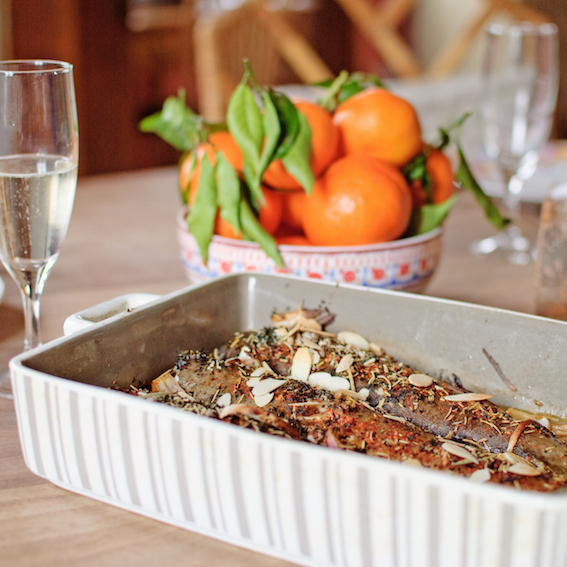
As a discerning Frenchman-in-the-making, Léo has strong opinions about the taste, quality and provenance of the water he drinks. At lycée, he often plays football at lunchtime with his classmates and, after playing on Friday, they were thirsty and nipped to the supermarket where he spotted an eight-litre bottle of his preferred water on special offer. Although they were due back in class, he couldn’t resist, and he and his friends had to haul this vast bottle back over almost a kilometre and up several flights of stairs. The vat was treated like a new class member and given its own desk and chair and became quite the talking point, much to the teacher’s exasperation. Over the next couple of days, it accompanied them everywhere, including the canteen at lunchtime where it had its own place at the table. When Léo was telling me this story, I was reminded of an experiment where men were asked to carry a five-kilo bag of flour around with them all day, pretending it was a baby. They had to feed it, change its nappy, put it down to sleep and generally do their best not to kill it. So now I feel like the grandmother of a giant blue, intellectually precocious water baby called Volvic…
In other news, I think that Java, who couldn’t be accused of intellectual precociousness, might need reading glasses. Either that or she’s wilfully disobedient, which I’m sure can’t be the case. Léo says a lobotomy is the only answer, but in view of the whole big blue water baby paternity thing, I’m not sure his opinion’s valid.

We are eating more trout and less salmon these days because, although I love wild salmon, it’s not always easy to find and is also expensive. Farmed salmon has three times more fat than the wild variety and a large proportion of this fat is the pro-inflammatory Omega 6, as opposed to the more beneficial Omega 3 fatty acid . It is the couch potato of fish and the quality of its fat speaks volumes.
Ingredients (serves 2)
100g salted butter
2 tablespoons fresh chives, chopped
2 tablespoons fresh parsley, chopped
1 tablespoon lemon juice
2 whole trout, cleaned and gutted
Sea salt and freshly-ground black pepper
1 teaspoon paprika
80g flaked almonds
Preheat the oven to 180°C. Melt half of the butter and combine with the fresh herbs and lemon juice. Cover the trout generously and then set into a baking dish and add the seasoning. Bake for about 25 minutes or until the fish crumbles when prodded with a fork. Melt the remains of the butter and gently fry the flaked almonds until golden brown. Pour over the cooked fish and serve. -
Oats and concrete proof of wackiness
I’m all about oats today, which means I won’t have time to talk about my eccentric dogs. But as a picture paints a thousand words here is:
Hugo waiting with eager anticipation for the vet to let him into her office because, after all, who isn’t a massive fan of painful injections?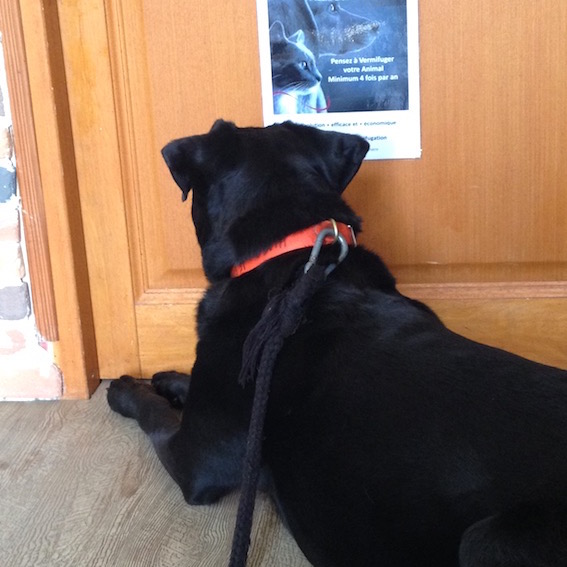
And Java yesterday. Luc asked me if I’d stuck her on a pole and used it to sweep the chimney. I particularly like the facial war paint. (By the way, I am aware that this is a case of the kettle calling the pot black; almost every time I see a photo of myself I immediately think of One Flew over the Cuckoo’s Nest).

Oats (Avena sativa) contain beta glucan, a complex sugar that forms a gelatinous texture in the digestive tract and has an enormously beneficial influence on the immune system. Beta glucan boosts defenses against bacteria, viruses, fungi and parasites.
Findings published in the BMJ showed that oat fibre reduced the risk of developing colorectal cancer. Not only do oats have anti-inflammatory properties, good gut bacteria may be increased by eating the non-digestible oligosaccharides they contain.Oats help maintain a healthy weight. According to a collection of scientific reviews, they play an important role in improving satiety, diet quality, and digestive, cardiovascular and general metabolic health.
Oats may help regulate blood sugar levels and improve insulin sensitivity, especially in people who are overweight or have type 2 diabetes. Beta glucans reduce the absorption of sugar and as a result lower levels of blood glucose.
A Finnish study found that babies introduced early to oats were less likely to develop persistent asthma. And soaked oats applied as a poultice or added to the bath also provide a very soothing treatment for eczema.
Oats are often used for their relaxing, restorative qualities, probably due to their high levels of B vitamins. In fact, oat extract has been used for centuries by healers in India to treat opium addiction. Studies have shown that it can also reduce nicotine cravings.
Last but not least, oats are a rich source of minerals, vitamins and antioxidants. This includes the B vitamins, iron, magnesium, phosphorus, potassium, zinc, copper and manganese. It is best to soak oats for at least two hours before eating as this improves digestibility. Soaking also reduces phytic acid, allowing for better absorption of the nutrients.
Here is a recipe for my staple breakfast of bircher muesli which eases the pain of getting up early.
Ingredients (serves 2)
4 tablespoons rolled oats
1 tablespoon sultanas
50ml oat milk (or any milk)
75g natural yoghurt
2 tablespoons’ honey
1 teaspoon lemon juice
1 apple, washed and grated
2 tablespoons chopped nuts (I use walnuts and almonds)
150g red berries (strawberries, raspberries, blueberries, blackcurrants)
Soak the oats and sultanas in the milk for at least two hours or even overnight. Stir in the yoghurt, honey and lemon juice. Then add the grated apple, chopped nuts and berries. -
Roast chicken with chanterelles and way TMI
I am about to embark on my final week of a three-week thermal cure in an attempt to relieve my knackered back. Handily, we live just half an hour away from one of the most renown and effective thermal resorts for my sort of problem in France. For two hours a day, I’m smothered in thick, sticky, mineral-rich mud, the texture of which is not dissimilar to melted chocolate, and then immersed in delicate champagne-like bubbles of pine and mineral-infused water. And then the really tough part: the relaxing therapeutic massage. Most of the other patrons, although fit enough to withstand the cure which is actually pretty tiring, have various medical complaints, details of which they are only too happy to divulge and contemplate. Yesterday the man in the massage booth next to mine spent a full 20 minutes waxing lyrical about his extensive collection of, frankly, alarming ailments. I was quickly on more familiar terms with his offal — or what was left of it — than I might ideally have liked. The thing that never ceases to amaze me about the French is the way they consider their maladies to be badges of honour and, as such, refer to them in, if not hushed nonetheless reverential tones. Unfortunately, the massage seemed to have a purging effect on him and the medical technicalities became increasingly gory and colourful. The overall, and in my case faint-making, effect was embellished by the fact that the masseur felt compelled to repeat everything he said REALLY LOUDLY, presumably on the grounds that she shouldn’t be the only one to benefit: ‘So you only have quarter of a kidney left on one side, half a liver and your entrails were scattered all over the operating table…’ I’m so glad I was lying down.
The combination of rain and sun that we’ve had recently means that chanterelle mushrooms are especially plentiful at the moment. Their delicate, slightly earthy flavour is a perfect complement to roast chicken and they are a surprisingly rich source of vitamin D, but also vitamin C and potassium.
Ingredients (serves 6)
2 tablespoons olive oil
1 chicken, gutted
200g fresh chanterelles
4 shallots, peeled and sliced
4 cloves of garlic, crushed
a handful of fresh thyme
1 bay leaf
4 carrots, peeled and sliced
Sea salt, freshly ground black pepper
1 teaspoon piment d’espelette or paprika
200ml dry white wine
100ml chicken stock
Preheat the oven to 180°C. Pour the olive oil into a large casserole dish (dutch oven) and add the chicken, chanterelles, shallots, garlic, herbs, carrots and seasoning. Gently brown the chicken on all sides over a medium heat and then add the wine and stock, which should be brought to a simmer. Put the lid on the dish and cook in the oven for just over an hour, or until the ‘sauce’ is beginning to caramelise slightly. You might want to remove the lid for the last ten minutes of cooking. I served with a potato and butternut squash purée and broccoli roasted with orange. -
Roasted sardines with orange and white wine and round and round the roundabout

This summer we visited every single roundabout in France. At least that’s what it felt like; I had never realised just how many roundabouts had sprung up over France until our trip at the beginning of August. I also hadn’t realised just how chatty — and boundlessly repetitive — our satnav lady had become. Bizarrely, she speaks with a very thick Belgian accent which Luc never tires of imitating. This is extremely unhelpful when you’re trying to work out which way to go. The unfortunate combination of Luc’s caricatures and left-right dyslexia, and my innate inability to obey instructions without lengthly debate, meant that Mrs Satnav spent most of the trip saying ‘faites mi-tour dès que possible’ (do an U-turn as soon as possible). At one point we even found ourselves on the motorway headed back in the direction we had come from.
Still on the subject of turning, several people have fallen off their horses on our land recently, which means that we recuperate either riderless horses or horseless riders. We had two riderless horses this week alone, and yesterday we were visited by a handsome Iberian horse called ‘Diablo’ (Devil), who apparently likes to live up to his name. We managed to track down his rider who was still spitting sand, muttering obscenities and wearing the filthiest pair of white jodhpurs I’ve ever seen. He explained, with a perfectly straight, if rather grubby, face that his problem was that he ‘topples over’ every time his horse changes direction. You couldn’t make it up could you? He seemed to be at his wits’ end so I desperately tried to make a few helpful suggestions, but in all honesty, the best I could come up with was that he take up pétanque or watercolours instead…
Sardines are an ideal source of omega 3 as they contain less mercury than larger fish. They also contain generous amounts of B vitamins, calcium, selenium and phosphorus. Sardines provide both EPA and DHA fatty acids which are useful in reducing inflammation. This improves hearth health, brain function, mood disorders like depression and anxiety, ADHD, various types of cancer, arthritis, etc.
Ingredients (serves 4)
1 tablespoon olive oil
1 red onion, peeled and sliced
1 orange, peeled, divided into segments and cut into thumb-sized pieces
4 medium potatoes, peeled, cut and pre-cooked
1 garlic clove, crushed
6 fresh sardines (gutted and heads removed)
1 teaspoon cumin seeds
1 teaspoon paprika
Sea salt and freshly-ground black pepper
1 glass white wine
Basil leaves to garnish
Preheat the oven to 180°C. Grease a large roasting dish with olive oil and add the onion, orange, potatoes and garlic. Coat everything with the olive oil. Place the sardines on top of the vegetables and sprinkle the seasoning over the top. Pour the glass of dry white wine over the top and roast for 15 minutes. Garnish with a few basil leaves and serve. -
Black cumin seed: the cure for everything except death

The prophet Mohammed stated in his Hadith that black cumin cures every illness except death. The use of black cumin seed, also known as nigella seed (nigella sativa), originated in Ancient Egypt where it was reputedly used by Queen Nefertiti and Cleopatra and traces of the oil were found in Tutankhamen’s tomb. Hippocrates, the father of modern medicine and the phrase ‘vis medicatrix natural‘ (the healing power of nature) used it to help with digestive and metabolic disorders.
Clinical studies prove time and time again black seed oil’s therapeutic uses, due mainly to its Thymoquinone content. This study, one among many, addresses the multitude of potential medical uses of the oil. It has been studied as an aid to fighting cancer, asthma and also as a tool to fighting drug-resistant bacteria like MRSA. In fact, there are so many studies backing up its efficacy, that it ranks amongst the top evidence-based herbal medicines. Black cumin seed oil has analgesic, anti-inflammatory, antioxidant, antibacterial, antiviral, anti-parasitic and anti-fungal actions.
It helps digestion: the oil and seeds are carminative, which means they aid digestion and can help to decrease bloating, gas and stomach cramps. If you suffer from irritable bowel syndrome (IBS), black cumin oil may be very beneficial as it’s been shown to have antispasmodic effects on the smooth muscle of the intestine. Black Cumin seed also appears to have anti-ulcer properties against Heliobacter pylori.
It alleviates allergies: The oil has a significant anti-histamic action. The benefits experienced were likely to be due to the effects of the black cumin oil on immune response, as well as its antihistamine effects. It also appears to have bronchodilatory properties, making it suitable for use with asthma and bronchitis.
It has been widely used to treat diseases of the nervous system such as memory impairment, epilepsy, neurotoxicity and pain. Black cumin oil also has mood stabilising, anti-anxiety and anti-depressant actions; its effectiveness in these areas is probably due to the fact that it increases GABA.
It helps detoxify and heal the liver when the liver is stressed due to medication side effects, alcohol consumption, overeating or disease. Scientists confirmed in a recent study that black seed oil benefits liver function and helps prevent damage.
Black seed oil is one of the few substances that has been found to help prevent both both type 1 and type 2 diabetes: Doctors from the Indian Council of Medical Research found that it ’causes gradual partial regeneration of pancreatic beta-cells, increases the lowered serum insulin concentrations and decreases the elevated serum glucose.’ According to the study, it improves glucose tolerance as efficiently as metformin without the significant adverse effects.
Black seed oil is effective for the immune system, either to enhance or balance. Particularly beneficial for autoimmune disease, it acts by balancing the immune system; it increases immune function without encouraging an immune reaction against healthy tissue in the body.
It may be taken in seed form (I often add seeds to bread and savoury pancakes, see above), or in oil form (I take one teaspoon of this one mixed in water twice a day). It may also be applied to the skin in case of skin conditions such as eczema and boils to soothe inflammation, itching and heal scars.
-
Roasted mackerel with white wine and mustard vinaigrette and pigs in the woods

For some reason I was thinking about wild boar while out walking with the dogs yesterday evening. As you do. Boar have really proliferated in this area over the past few years and often make quite a nuisance of themselves; it’s obvious where they’ve been because they scratch at the ground, turning up sand, dirt and dead leaves. The sows are particularly aggressive in the spring when they have their young to protect. Although we’re seeing more and more traces, it’s still quite rare to actually see them. My thoughts and I were on a little path by the river where, in the nine years we’ve been here, I have never seen a soul (or a pig for that matter), when I heard the distinctive sound of rustling leaves coming from the bushes. My mind’s ear might even have heard an ‘oink’.
Despite all evidence pointing towards a killer drove of wild pigs, it actually turned out to be a cyclist looking for his mobile ‘phone that he’d dropped the day before. It’s just as well I don’t have a hunting rifle, because I might have shot him. Flooded with relief at having cheated ‘death by wild boar’, I momentarily forgot the correct French term, sanglier, and said: ‘Oh, I’m sorry! I thought you were a pig!’. In terms of animal insults, pig is definitely right up there, and it has absolutely none of the nobility of the term boar. Desperately trying to redeem myself I continued: ‘Don’t worry, now I see your fluorescent clothing , you look nothing like a pig’. As if he would have been a dead ringer for one minus cycling garb. Luckily my inner, and extremely repressed, sage intervened to say that now would be a good time to stop talking. Forever if at all possible.
It was not one of my finer moments. I must say though, he was exceedingly gracious for someone who had just been accosted by a total nutter in the woods. Especially as he must have been quite keen to escape. I never did find out if he found his ‘phone.
This recipe is adapted from a Gordon Ramsay recipe. It’s quick and simple to make and the result is moreish and very healthy. Mackerel is one of the richest fish sources of omega 3 which is beneficial for the heart, helps prevent diabetes, improves bone and joint health and improves memory and mental status.
Ingredients (serves 4)
2 cloves of garlic, peeled and crushed
2 teaspoons paprika
1 teaspoon sea salt
1 tablespoon olive oil
8 small mackerel, gutted
500g new potatoes, peeled
4 shallots, peeled and finely sliced
For the vinaigrette:
½ teaspoon curry powder
1 tablespoon white wine vinegar
1 teaspoon Dijon mustard
4 tablespoon olive oil
Sea salt and freshly ground black pepper
Preheat the oven to 200°C. Add the garlic, paprika, sea salt and olive oil to and small bowl and mix to form a smooth paste. Rub the mackerel with the paste and set aside in a ceramic baking dish.
Boil the potatoes under tender, then drain. Return them to the pan with a bit of sea salt and olive oil and crush roughly with the back of a fork, adding and combining the chopped shallots.
Roast the mackerel for about 20 minutes. To make the vinaigrette, place all the ingredients in a bowl and beat well with a fork until velvety-smooth.
Serve the mackerel on the potatoes and topped with vinaigrette.
-
Green and orange winter vegetables and a gallant caretaker
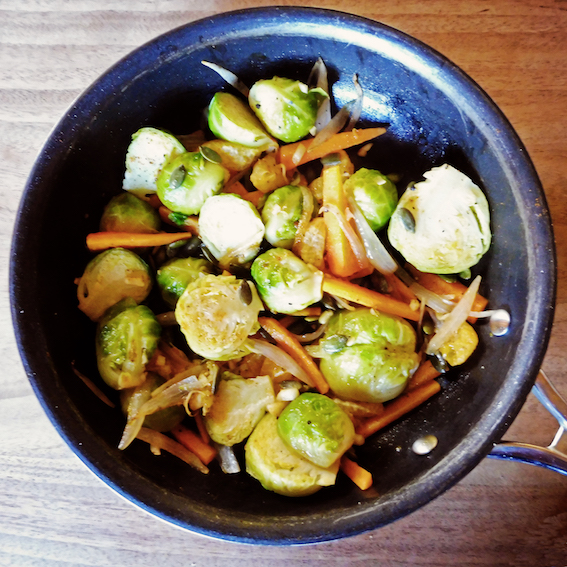

I noticed that Bossy hasn’t been boasting about her latest achievement: a broken bone in her foot, which she achieved running around barefoot like a child. (I’m only telling you this because I felt she was a little bit dismissive — caustic even — about my entirely-justified need for a change of location for my bed in her last post.) Java goes absolutely stark raving loony if she doesn’t get enough exercise so, in the absence of a suitably tiny strait jacket, Bossy has been taking us out on her bike, pedalling with one foot. Because she’ssuch a klutztemporarily handicapped, I’ve been staying by her side as her balance looks more than a little bit precarious. Apparently though, I underestimated her ineptitude because she managed to cycle into me and fall off anyway. She wasn’t cross though because I think she knew I was just trying to be supportive.
In other broken bone-related news, the Tall One has been seeing an acupuncturist, Mr Chan, about his shoulder. He seemed quite upset that Mr Chan hadn’t shown any enthusiasm to see his entire x-ray collection as opposed to just the relevant ones. I have to say, I can see Mr Chan’s point; extensive and chronologically-ordered photographic evidence of someone else’s fracture history is hardly inspiring is it?
As you all know, I’m not a vegetable fan, but I have to say this dish was quite pretty and apparently very healthy. With a wide variety of nutrients ranging from magnesium and manganese to copper, protein and zinc, pumpkin seeds pack quite a punch. Having said this, Bossy and Tall eat them all the time and it doesn’t seem to stop them from doing silly things.
Ingredients (serves 4)
500g Brussels sprouts, peeled and halved
2 tablespoons olive oil
4 shallots, peeled and sliced
2 cloves garlic, peeled and crushed
2 carrots, peeled and julienned
1 handful pumpkin seeds
1 handful flaked almonds
1 satsuma, peeled and cut into segments
Sea salt and freshly ground black pepper
½ teaspoon paprika
½ tablespoon honey
Cook the Brussels sprouts briefly in salted boiling water for about five minutes, drain and set aside. Heat the olive oil in a large frying pan and fry the shallots and garlic until golden. Add the sprouts and carrots and cook until the carrots soften a little (about five minutes). Add the pumpkin seeds, flaked almonds, satsuma pieces, seasoning and honey and cook for another few minutes until everything is honey-coated. Serve!
